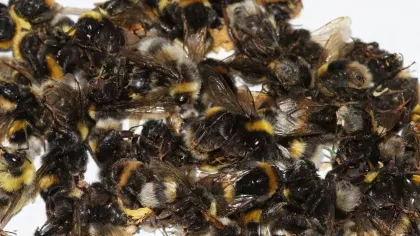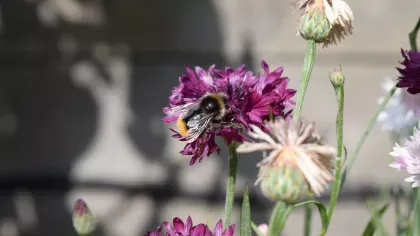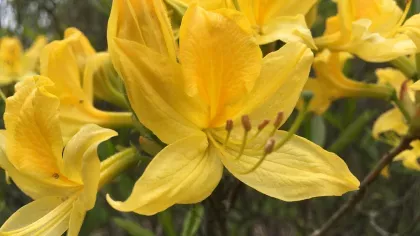10 October 2019
Medicinal nectar for bumblebees
Researchers from Kew and Royal Holloway have been investigating the medicinal value of plants for pollinators.

Just like us, pollinators can catch their own diseases that make them sick. Parasites are a natural and important part of the web of life.
But additional pressures, such as habitat destruction, pesticides, climate change and the unintentional transport of parasites across the world, might push pollinators to the edge of their ability to cope with their illnesses.
Almost 90 per cent of the world’s flowering plants, including many important food crops such as apples, strawberries and almonds, need animals like bees, wasps, flies, moths, and even birds and bats for pollination.
Clearly, we can’t afford to lose our diverse pollinator communities.
Beekeepers might be able to help sick colonies of domesticated honeybees directly and treat parasites. But how can we ensure that wild pollinators are able to deal with disease threats?
Preventing infections with heather nectar
Plants have provided us with a natural source of medicines for millennia, thanks to the enormous variety of chemical substances they produce.
We set out to discover if there might be plants with medicinal benefits for our wild pollinators as well.
First, we tested the activity of nectar from 17 important food plants for bees in Europe against a very common gut parasite of bumblebees (Crithidia bombi).
In our lab, we can grow this microscopic, single celled parasite in a liquid culture medium and, therefore, quickly screen for substances that might inhibit or kill it.
The nectar with the highest inhibitory activity against the parasite was from heather (Calluna vulgaris). By separating the different chemical constituents of the heather nectar, we discovered that a single compound was responsible for this parasite inhibition.
We named this chemical compound callunene after the name of the heather plant (Calluna).
Crithidia and buff-tailed bumblebees
Next, we looked at the effects of callunene on Crithidia infections in buff-tailed bumblebees (Bombus terrestris), one of our most important wild pollinator species in Europe.
We found that callunene can protect bumblebees from becoming infected with Crithidia at concentrations naturally found in heather nectar. When we looked at the parasite cells more closely, we saw that callunene made them lose their “tail” (the flagellum), a structure the parasite uses to swim and attach to the gut wall of the bumblebees.
This probably stops the parasite from successfully infecting the bumblebees.
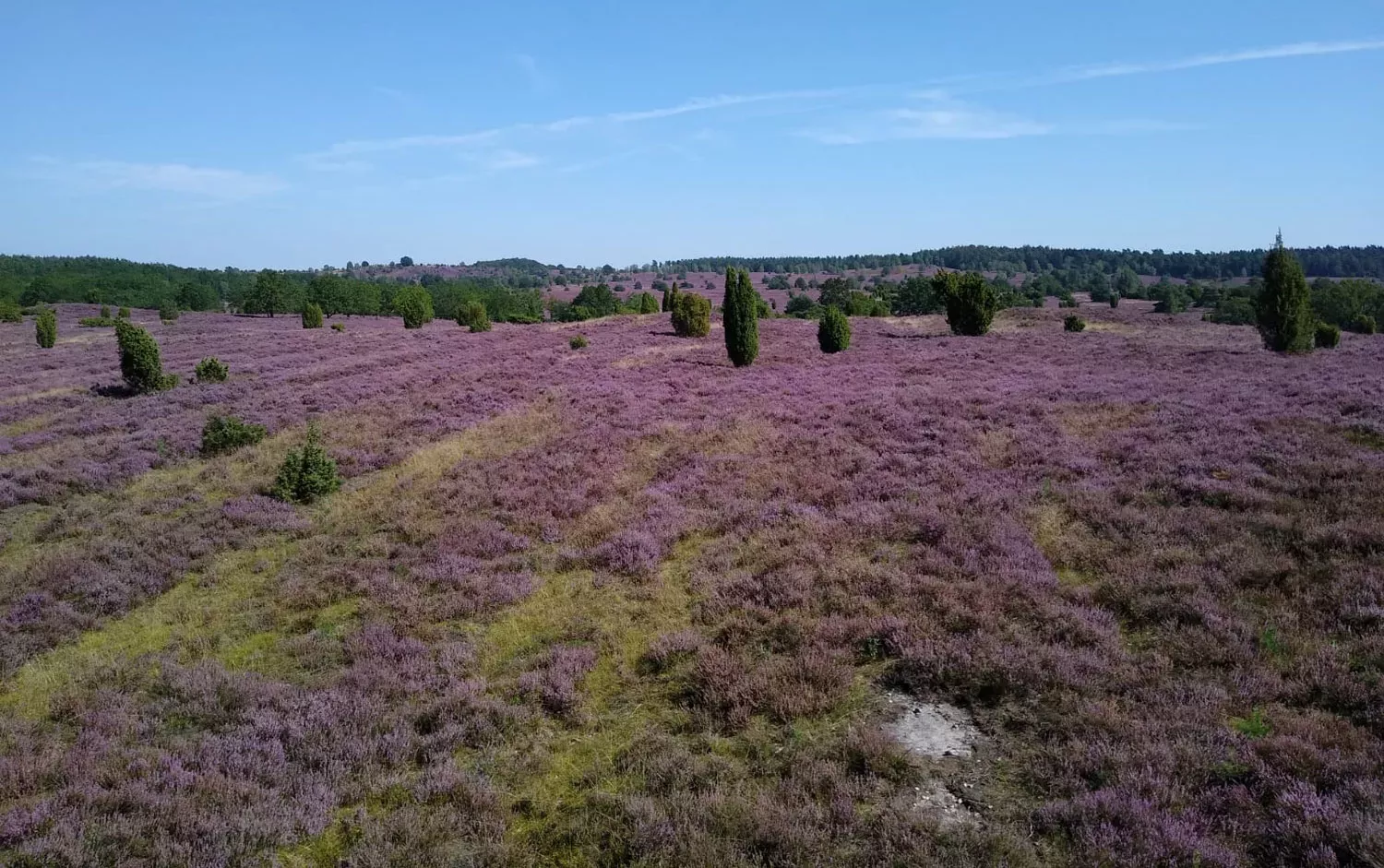
Preserving plant diversity for healthy pollinator populations
This protective value of heather nectar may be very important for UK bumblebees, especially as heather has been estimated to produce the second highest amount of nectar of any UK plant species.
Unfortunately, heathlands dominated by Calluna heather are disappearing or becoming more fragmented across Europe, due to changes in land use, nutrient pollution favouring faster growing plants, and climate change.
This should be of great concern, as heathlands are some of the most species rich places for bee diversity.
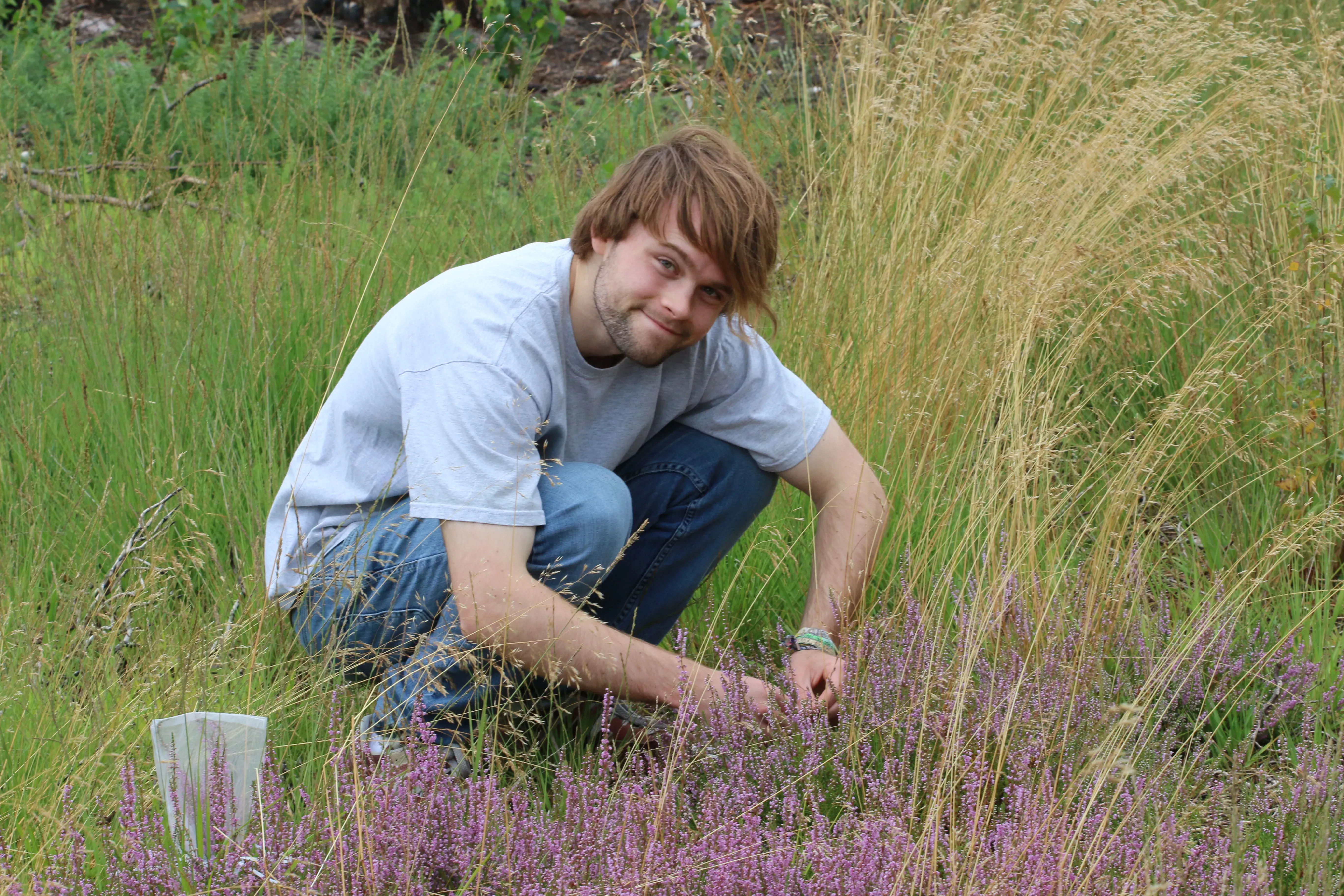
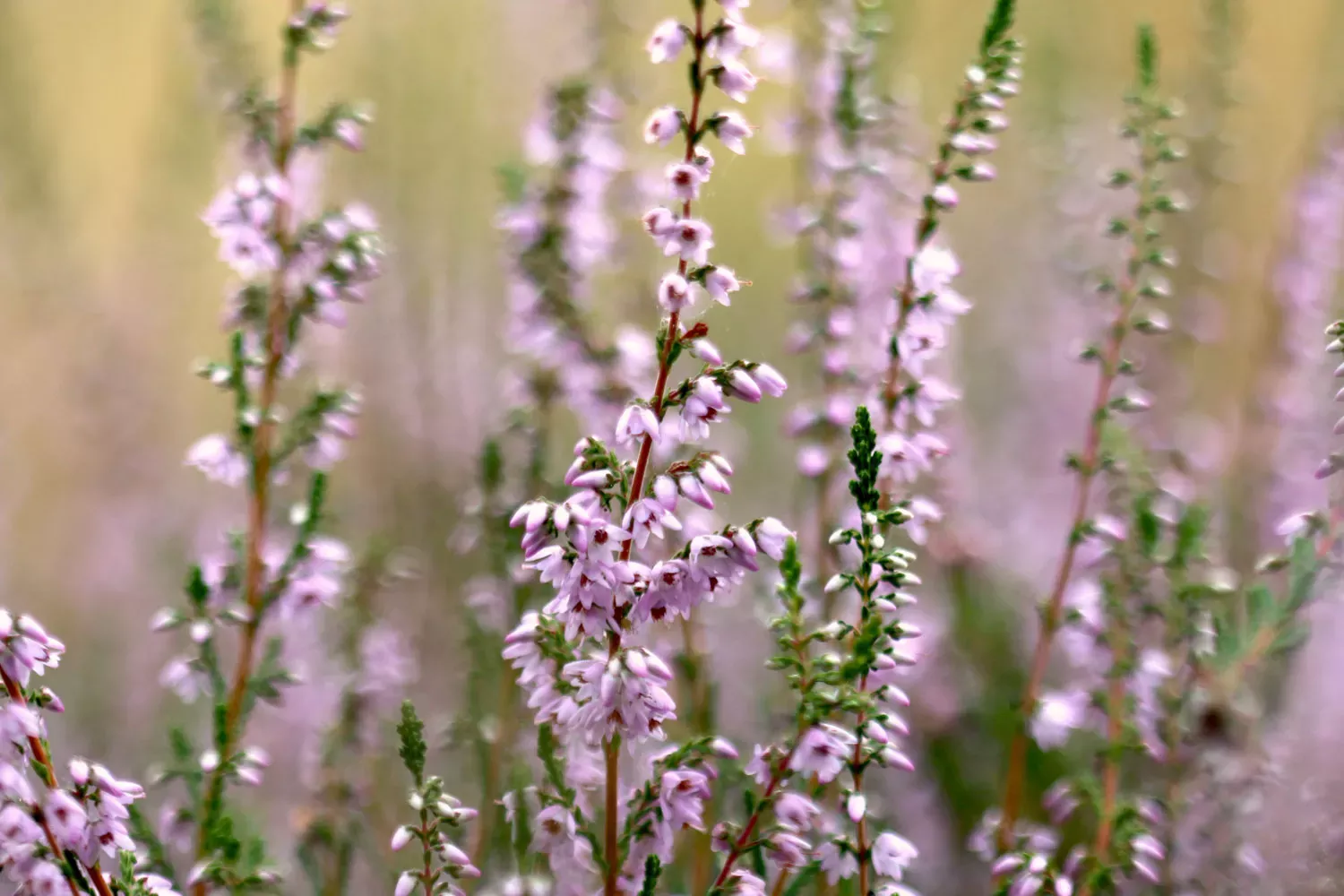
Identifying beneficial plants
Our work shows that protecting heathlands is important for wild bumblebees to access natural medicinal nectar to be protected against a major parasite.
The global decline of plant diversity may mean that pollinators are losing many other health promoting plants without us realising it.
In our laboratory at Kew, we are therefore investigating the nectar and pollen chemistry of a wide variety of plants in natural and agricultural environments for their nutritional and medicinal value to pollinators.
Identifying and conserving key beneficial plants will be essential for safeguarding pollinators against threats of a changing environment.
Acknowledgements
We thank the Peter Sowerby Foundation for funding our research.

Many thanks to the team involved:
- Prof. Phil Stevenson, Kew
- James Woodward, student intern at Kew 2017-2018
- Prof. Mark Brown, Royal Holloway University of London
- Dr Moses Langat, Kew
References
Koch, H., Woodward, J., Langat, M.K., Brown, M.J.F. & Stevenson, P.C. (2019). Flagellum removal by a nectar metabolite inhibits infectivity of a bumblebee parasite. Current Biology 29: 1-7.
Koch, H., Brown, M.J.F. & Stevenson, P.C. (2017). The role of disease in bee foraging ecology. Current Opinion in Insect Science 21: 60-67.
McArt, S.H., Koch, H., Irwin, R.E. and Adler, L.S. (2014). Arranging the bouquet of disease: floral traits and the transmission of plant and animal pathogens. Ecology Letters 17: 624-636.
Baude, M., Kunin, W.E., Boatman, N.D., Conyers, S., Davies, N., Gillespie, M.A., Morton, R.D., Smart, S.M. & Memmott, J. (2016). Historical nectar assessment reveals the fall and rise of floral resources in Britain. Nature 530: 85-88.

